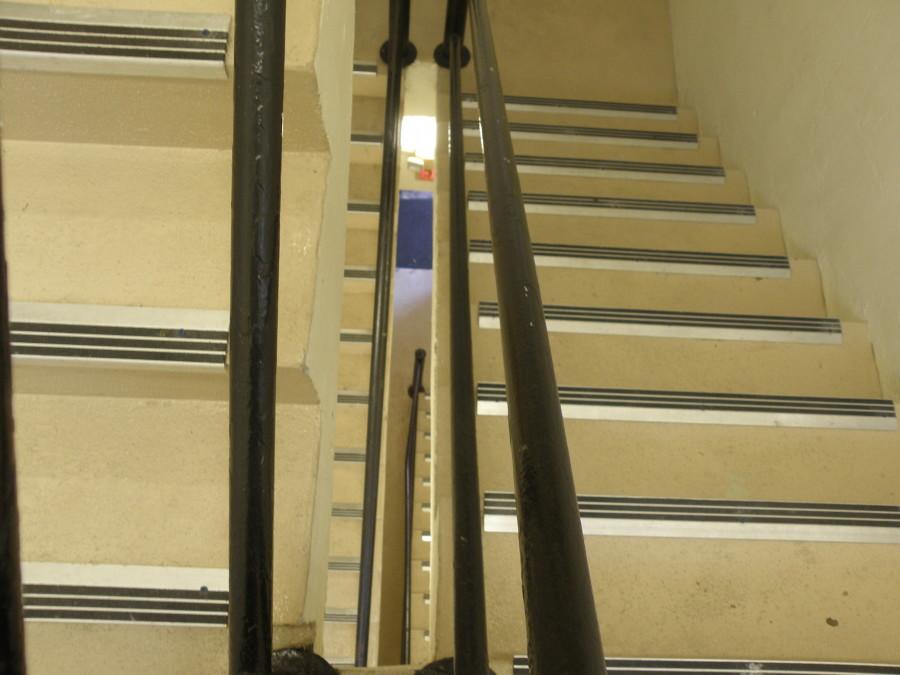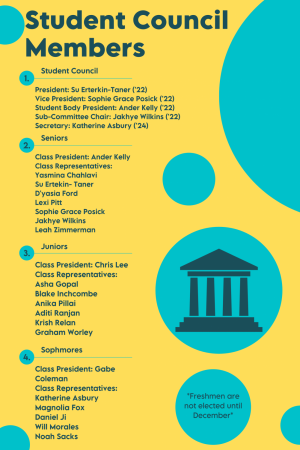Disability Access at Bolles
October 20, 2015
Upon entering Bolles Hall, one might be enamoured by the elegant wood paneling, enchanting chandeliers and intriguing student art on display. But some students may not notice the hazard in their midst. Standing two stories tall, with cattywampus corners and no intent on moving any time soon, sit the stairs. For any able bodied student, this menace poses no threat, but for anyone with a broken leg or permanent handicap, it can present quite a challenge.
“It was definitely difficult,” recalls Garrett Hudson, a Bolles alumn who suffered a severe back injury during his time at the school. After breaking two places in his back during weightlifting, he received surgery that put him in a stiff back brace for the better part of his junior year.
“It made me realize the day to day things we take for granted, that we shouldn’t take for granted,” Hudson said.
While in the brace, he had a limited range of motion that kept him from bending and twisting and made walking more taxing. In an ideal situation, Hudson said he would have liked to ride an elevator, to avoid holding up traffic on the stairs. Instead, he waited until after the second bell to transition classes and relied on the kindness of benevolent friends to help carry any books that wouldn’t fit in his rolling backpack.
Quite a few rumors have swirled around the possibility of the previous existence of an elevator in Bolles Hall.
Quinn Barton, School Historian and Archivists, confirmed the myths, “ “Yes, there was an elevator in the days of the old San Jose Hotel… It was located just across from what is now the President’s office.”
The elevator was removed when the hotel was transformed into a military school in 1928 and there hasn’t been one since. With the large population of student athletes at Bolles, and thus a higher amount of injuries, it would make a lot of sense to have an elevator in one of the most popular buildings in the school. It would eradicate the scramble for administration to rearrange schedules and even move classrooms to accommodate for injured students. This modification would also open the door for an entirely new demographic of students because if you look around campus, you notice there aren’t many, if any, handicapped students.
According to Mark Frampton, Dean of Admissions, physical ability is not something they take into consideration until much later in the admissions process, where admissions counselors would have to be “very clear” about what the school has to offer as far as accommodations. If someone was wheelchair bound, there would be no way to go a school that didn’t have an elevator in all of the buildings. A few modifications have been made to meet the American Disability Act code, such as ramps and putting the girls bathroom downstairs to build a handicap stall in Schultz. But these modifications are next to useless if there aren’t any handicap students to utilize them.
Many private schools face similar challenges with retrofit modifications, because of the age of the buildings. Nancy Greene, Chief Financial Officer, says the biggest challenges in regards to the upgrades is space and cost, though “Handicap access is high on our priority list.” As far as elevators are concerned, she says they are not out of the cards, as they have been brought up several times.
Perhaps if the school held back on making minor modifications, and saved up to make larger ones, like the addition of elevators, they could make the money back in tuition from the population of students that would be able to attend.
But even if we can’t swing it, the school is doing, according to Mrs. Greene, “the best they can,” to meet regulations and make the campus more accessible to handicapped and injured students.






